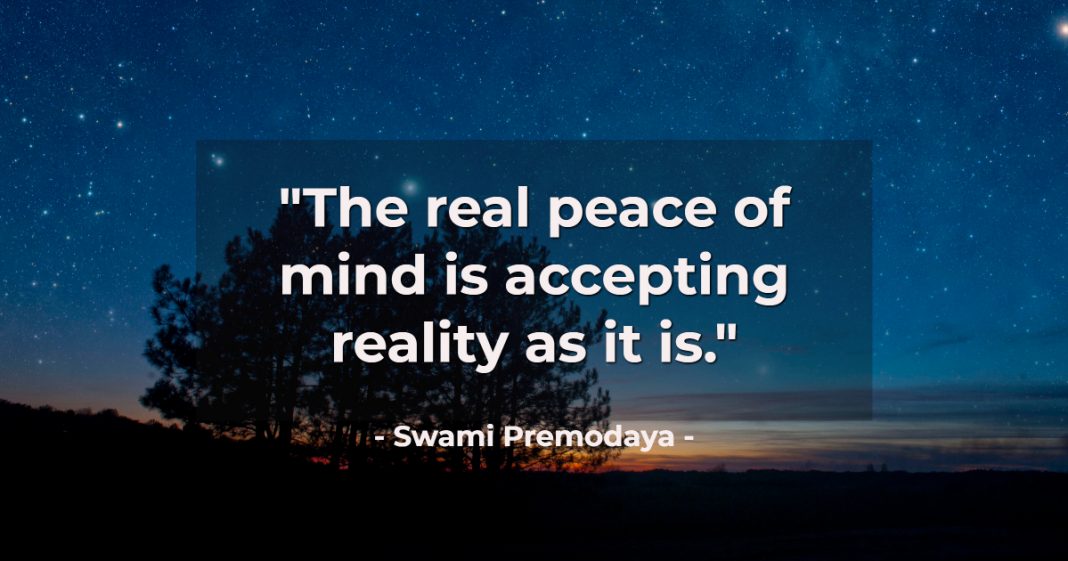When the past seems inescapable, we get desperate and do everything we can to forget. We make drastic changes about ourselves, which can negatively affect the way we live our life. On the other hand, a less known method to letting go involves facing your problems head-on.
When running away is no longer the answer, consider that maybe it’s time to start running towards your problems instead.
Here’s an approach that involves an unconventional but healthy way of letting go:
Accept Reality For What It Is

For most of us, moving on is hard because we don’t want to accept reality. When we feel guilty, anxious, or scared, we tend to mask those emotions and pretend they’re not real. We tend to look the other way and actively search for ways to forget. Sometimes emotions win over reason, and for a moment we’re convinced that our problems have disappeared just because we’re not thinking about them.
But that’s not reality, is it? These problems exist and can embed themselves into every fiber of your existence. Turning away from reality won’t do you any better. It only creates a false sense of security and creates a temporary sense of peace.
Asssess Your Position In This Reality
When you finally decide to face your problems, you need to acknowledge what your position is in this reality. In other terms, try to understand just how deep the problem is. What do you need to do to turn things around? Let’s put it in tangible terms: if you’re in debt, how much money do you need to pay off your existing credit?
Assessing your position in this reality entails immersing yourself in the problem. You’re not just saying that the problem exists; you’re understanding that this problem exists in your life. While challenging, it’s a necessary step to progress and letting go.
Understand Your Typical Responses
Despite the millions of years we’ve had to evolve, we still haven’t grown out of our fight-or-flight tendencies. When faced with stresssful stimuli, our first reaction is to turn away and ignore it. If the problem persists, we ignore it some more, hoping that it disappears on its own. Only we know this never happens.
The road to progress invovles stability. How are you going to solve your problems if you end up running the opposite direction every time you get to the midway mark? There are ways to rationalize your abstract emotions and find concrete solutions to fight them.
Watch what happens to yourself when involved in strenuous scenarios. What’s your go-to approach? Do you end up projecting your anxieties on other people? Do you ignore your messages in the midst of an approaching deadline? Do you blame your colleagues in the face of failure?
Understanding what you tend to do helps you see your actions as sequential and therefore not involuntary. When you separate the responses from the reality, you’re able to see that these reactions aren’t inevitable; that they are by-products and not realities. From here, you can start figuring out which bad habits you’ll do good to replace, and what possible steps you can take to prevent and eventually replace these flight responses.

Don’t Run Away, Run Towards It
Some people believe that letting go is an act that involves moving away from it. In order to let go of something, some people physically separate themselves from this reality. But moving to a different town, getting a new job, or filing a lawsuit doesn’t always fix your problems.
Sometimes the pain and hurt is already so entrenched in your reality that you just can’t get away from it. In times like these, the solution isn’t to move away from it but towards it.
Face your fears and charge at it head first. Brace yourself for the pain that’s about to come without forgetting that this is for the better. Remind yourself of the good habits you’ve come to develop and use those to healthily cope with the problem.
Let Things In
The final step in the art of letting go is the opposite of what the phenomenon suggests. In order to let things go, divert your attention to soaking up the problem, not spitting it out. It’s easy to think that escapism is the best solution for your problems. In reality, this only distances you from the problem. You may be miles and years away from the source of your pain and stress, but that doesn’t mean it’s non-existent.
Don’t push out the unwanted. Don’t reject negative emotions. Don’t run away from anxiety, fear, insecurity, and sadness. Accept them for what they are and immerse yourself in these emotions. Allow them to exist, but not as abstract things that you feel but as conditions that you can change.
When you let things in, they no longer become untouchable. Emotions become a part of you, and therefore controllable by you. You take away the power of these emotions by making them a part of you. How are these emotions going to haunt you if they don’t even bother you?
Most people think the art of letting go involves letting out, not knowing that the best way to deal with the world is by soaking up unwanted stimuli, one deep breath at a time.












